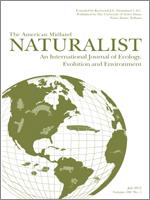Slimy sculpin Cottus cognatus are being reintroduced into coldwater streams in the upper Midwestern United States, where they were extirpated by stream degradation during the early- to mid-1900s. Habitat use and selection by slimy sculpin were examined in nine coldwater tributaries of the Upper Mississippi River in southeastern Minnesota to determine which stream habitats are important for successful reintroduction. Most (>70%) individuals (n = 1932) used coarse substrates and vegetation, shallow water (<30 cm), slow current velocities (<20 cm/sec), and moderately embedded (15–60%) substrates. Compared to habitat availability, adults selected boulder substrate and vegetation, whereas young-of-year (YOY) selected gravel, rubble, and vegetation. YOY sculpin selected shallow water (<30 cm), whereas adults exhibited broader selection (1–60 cm). Both age groups selected the slower bottom velocities (especially <20 cm/sec). Habitat use and selection by adult fish were consistent among 3 y of surveys. Habitat suitability index values for sculpin were similar among native sculpin streams and streams where sculpin have been or may be reintroduced within the same geographic region. Slimy sculpin displayed habitat selection similar to that of other sculpin species, except for selecting much slower current velocities. Suitable physical habitats are present in coldwater streams in southeastern Minnesota to support further reintroduction of slimy sculpin. Failed reintroductions of sculpin likely are not related to lack of suitable physical habitats.
How to translate text using browser tools
1 July 2012
Selected Habitats of Slimy Sculpin in Coldwater Tributaries of the Upper Mississippi River in Minnesota
Neal D. Mundahl,
Kristin Nelson Thomas,
Erik D. Mundahl
ACCESS THE FULL ARTICLE
It is not available for individual sale.
This article is only available to subscribers.
It is not available for individual sale.
It is not available for individual sale.

The American Midland Naturalist
Vol. 168 • No. 1
July 2012
Vol. 168 • No. 1
July 2012




